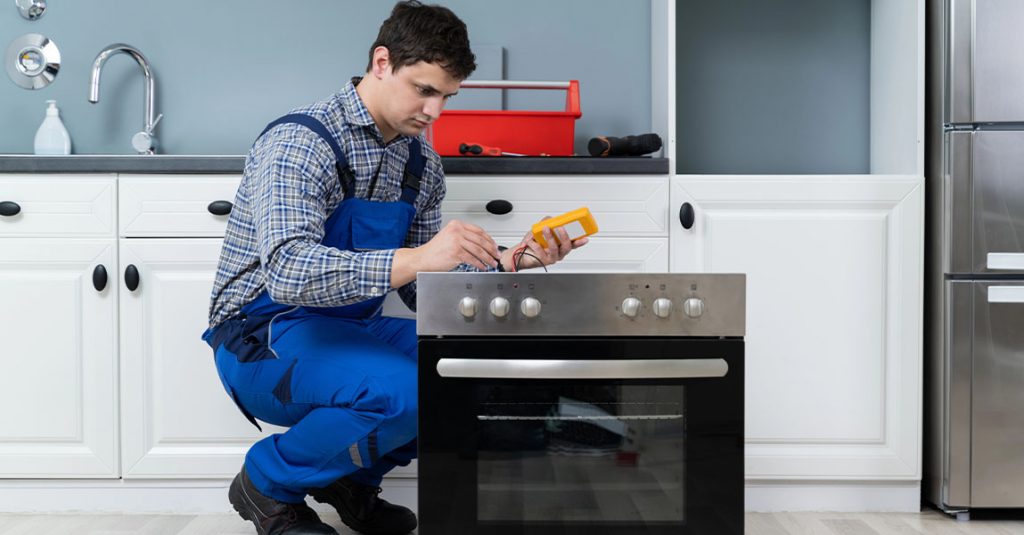When we turn on our oven, we expect it to bake, roast, or broil at the correct pace. Sometimes, however, food seems to take much longer than it should even when the temperature setting is right. This issue can be frustrating, especially if meals turn out undercooked or uneven. Let’s look at the main reasons this happens and what we can do before calling for help.
Temperature Calibration Issues
Sometimes an oven shows the correct number on the display but does not heat to that temperature. This happens when the internal thermostat or sensor loses accuracy. In other words, the oven may be running cooler than expected, so food takes longer to finish.
We can test this by using an oven thermometer placed inside while preheating. If the reading is off by more than about 25 degrees, our oven likely needs recalibration. Modern models often allow manual adjustments through the control panel. However, older ovens may require professional service. For consistent baking, checking calibration is an important step. For more detailed help, we can look into oven repair in Okotoks.
Heating Element Wear
Another reason for slow cooking is a worn heating element. Ovens with electric coils depend on these parts to distribute heat evenly. Over time, they can weaken, crack, or fail to glow fully. When this happens, the oven struggles to maintain steady temperatures.
To check, we can visually inspect the elements when the oven is turned on. A healthy coil should glow red across its entire length. If only part of it heats or if there are visible breaks, replacement is likely needed. Gas ovens face similar problems if the igniter weakens, leading to poor burner performance. Taking action early avoids bigger repair costs later.
Poor Insulation and Heat Loss
Heat loss plays a major role in cooking delays. If an oven door does not seal tightly, warm air escapes during cooking. This forces the appliance to work harder to reach and maintain the set temperature, slowing down meal preparation.
We can test the door seal by closing it on a sheet of paper. If the paper slips out easily, the gasket is worn and needs replacement. Likewise, cracks in the glass or frame can also cause heat leakage. Restoring proper insulation makes cooking more efficient and helps save energy. For broader advice about fixing appliance problems, visiting appliance repair in Okotoks can provide helpful guidance.
Overcrowding and Cookware Choice
Sometimes the issue is not the oven itself but how we use it. Overcrowding trays or using oversized dishes can block airflow inside. As a result, heat does not circulate evenly, leaving food undercooked in spots.
We should leave space between dishes and avoid covering racks with foil. Cookware also matters. For instance, thick glass or ceramic takes longer to heat compared to lightweight metal pans. Using the right type of dish for the recipe ensures more consistent results. Small changes in how we arrange food can greatly reduce cooking times.
Electrical or Gas Supply Problems
Slow heating may also point to an issue with the power source. For electric ovens, a failing circuit or loose wiring can limit the flow of current to the elements. Gas ovens can suffer if the supply line is clogged or the regulator is malfunctioning.
If lights flicker or the oven struggles to ignite, the supply should be checked. These problems are not safe to handle without proper training. Calling an experienced technician prevents hazards and ensures the oven operates correctly again. If repairs are necessary, reaching out through our contact page is a simple step forward.
When to Seek Professional Support
While some issues can be tested at home, like checking seals or rearranging cookware, others require technical skill. Faulty sensors, broken elements, and supply line problems are best handled by professionals. Our team at Freedom Appliances works with these cases daily and understands how to restore ovens quickly and safely.
We recommend taking note of symptoms, such as whether the oven preheats too slowly or struggles during long cooking cycles. Sharing these details helps pinpoint the exact issue faster. With the right repair, meals return to cooking at the pace we expect.
FAQ
Why does my oven take so long to preheat?
This usually happens when the heating elements weaken or the thermostat is out of calibration. It may also be due to poor insulation that lets heat escape.
How do I know if my oven thermostat is faulty?
Place an oven thermometer inside and compare the reading with the set temperature. If the numbers differ by more than 25 degrees, the thermostat may need adjustment.
Can cookware affect how long food takes to bake?
Yes, heavy glass or ceramic takes longer to heat up than thin metal pans. Choosing the right cookware improves results.
Is it safe to keep using an oven with a broken heating element?
Cooking may be uneven and unreliable, and further damage can occur. It is safer to arrange for a replacement.
When should I call for professional help?
If the oven shows wiring, ignition, or gas supply issues, it is time to call a technician. These are not safe to handle on our own.

